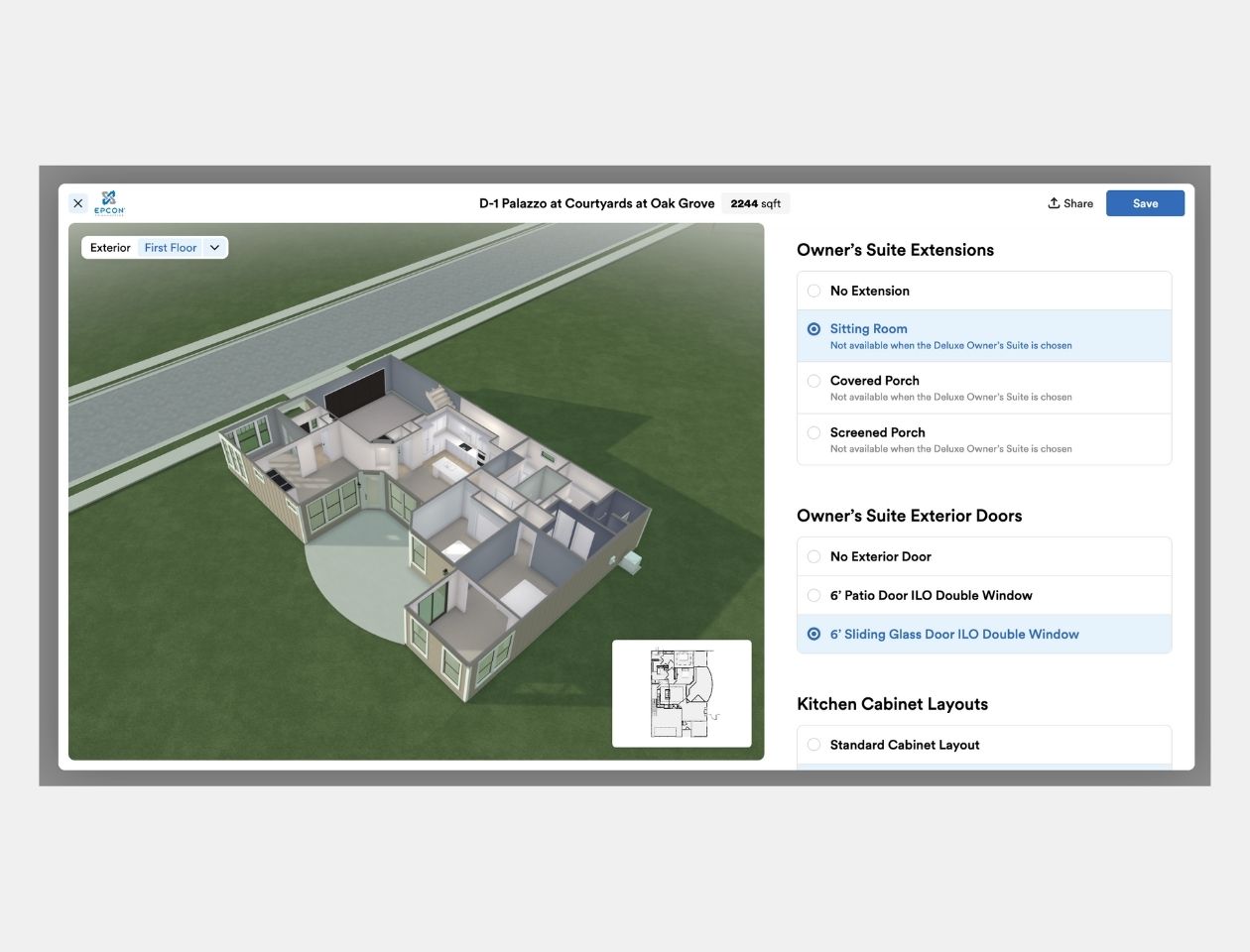Understanding the Impact of Centralized Architectural Plan Management
Centralized architectural plan management is becoming a powerful growth driver, helping builders streamline processes, improve efficiency, and foster collaboration.
Builders face an uphill battle when it comes to centralizing plan management, which is why many choose to outsource much of the process. This strategy has its drawbacks and leaves builders at the mercy of outside contractors who are often unwilling to move with the agility necessary to keep up with changing product and market changes.
The Challenge of Managing Change in Homebuilding Operations
Homebuilders face significant challenges when managing changes in their projects. These challenges often stem from the need to update architectural plans to meet new requirements, address unforeseen issues, or accommodate customer requests. The process of implementing these changes can be complicated, manual and time-consuming, involving multiple stakeholders and departments.
When a change needs to happen, it typically follows a reactive approach. Separate teams scramble to communicate changes between all the different departments and make sure that all parties are on the same page.
A slow, reactive approach involving multiple software solutions usually leads to delays, errors, and increased costs. Being proactive doesn’t necessarily involve anticipating all potential changes, but it does mean having systems in place that can handle change efficiently.
Homebuilders have traditionally relied on tribal knowledge versus data management, further complicating these challenges. Tribal knowledge, while valuable, can be inconsistent and difficult to transfer.
Currently, managing new plans and updating existing ones involves a combination of manual processes, disparate systems, and, often, a significant amount of guesswork. An approach centered on data management provides a more reliable and scalable solution, ensuring that accurate and up-to-date information is available to all stakeholders.
“We can quickly and easily alter our plans when working across multiple municipalities rather than creating a whole new set. This saves us a lot of time.”
-Rhett Wallace, Buffington Homes
What Effective Change Management Looks Like
Effective change management requires inputs and outputs from various departments, including design, engineering, construction, warranty, and sales. Outsourcing certain tasks can help alleviate some of the burden, but it also introduces dependencies and potential delays. Waiting, hoping, and praying are not strategies — they are symptoms of a broken process.
For example, take a piece of self-developed land that doesn't meet existing plan requirements. Who needs to be involved? How fast can you update existing plans and disperse the information to those who need it?
Managing updates at the plan, community, and regional levels adds another layer of complexity. A centralized system can streamline these processes, ensuring that updates are accurately tracked and implemented across all levels.
Stats: Wasted Trips, Wasted Days in Homebuilding Operations
Inefficient plan management can lead to wasted trips, wasted days, and significant financial losses. For example, rework due to miscommunication or outdated plans can cause delays and increase costs. Homebuilders are notorious for not understanding the true total cost of trips and days. Conservative estimates often place $10,000 in wasted trips per unit built and over $400,000 in additional revenue as the result of saving 5 schedule days on building 100 units per year.
The Ideal State of Change
Handling unique requirements like municipal regulations and special lot configurations within a centralized framework is essential for effective change management. A connected cloud platform facilitates this by providing real-time, collaborative access to updated plans and information while maintaining the flexibility to deal with one-offs and special situations.
When a change needs to happen, quick and efficient updates must be communicated to all stakeholders in real time. A connected cloud platform enables this by providing a central repository for all plans and related information. Solutions like Higharc offer a central place to manage changes. And since it’s web-based, it’s built for agility, allowing data to flow at the speed of modern homebuilding.
One of Higharc’s key advantages is its ability to adapt to different operational styles. Regardless of builder size, Higharc can support flexible and efficient plan management at the lot, community, division, or national levels. Plans that “travel” easily between different stakeholders and locations ensure that everyone is working from the same information, reducing errors and improving collaboration.
Next Steps for Homebuilders
For homebuilders looking to adopt a centralized architectural plan management platform and improve their land acquisition strategies, the next steps involve evaluating current processes and identifying areas for improvement. Adopting a connected cloud platform like Higharc allows for streamlined plan management, reduces inefficiencies, and enables growth. By centralizing plan management, homebuilders can ensure that their projects are completed on time, within budget, and to the highest quality standards.
Check out Higharc.com to learn more or reach out to me at michaelmiller@higharc.com.
—
Michael Miller spent just under a decade with a large regional builder based in Texas. Starting as an estimator and field validator, he transitioned through various roles in purchasing and eventually became the "software guy." His journey is a testament to his dedication to solving homebuilder problems with technology. Michael worked with multiple homebuilder ERP companies before joining Higharc, where he now leads integration efforts with the product and customer success teams. His unique perspective on the industry, combined with his technical expertise, makes him an invaluable resource for understanding the intricacies of plan management.
See higharc in action
Discover how Higharc can empower your team to conquer change, modernize your buyer experience, and decrease cycle times.
Book a demo

%20(1260%20x%20960%20px).jpg)

.png)




.png)



.jpg)








%20(1260%20x%20960%20px).jpg)

.jpg)

.jpg)



















